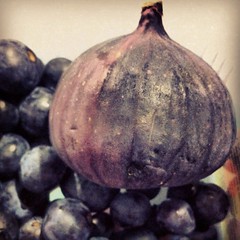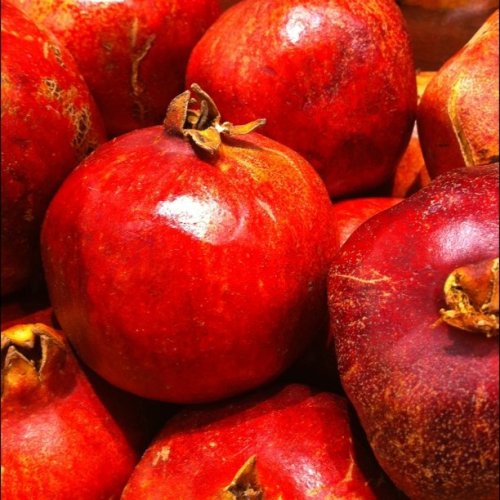The month of Sh’vat (January 11-February 10, 2013) includes the holiday of Tu Bishvat (January 25-26, 2013), which is a particularly significant day for contemporary Jews who are passionate about nature, ecology and farming. Today, this relatively minor holiday has become a key celebration of our sacred connection with fruit trees, food and the natural world. However, amidst our delight in this bounty, we would do well to reflect critically on what fruits we enjoy, when we consume them and where they come from.
 Tu Bishvat is not a biblical holiday. In Mishnah Rosh Hashanah 1:1, the early rabbis describe four different New Years occasions. One of these is Rosh Hashanah La’ilan—the New Year for Trees—which the School of Hillel places on the 15th of Sh’vat. (In Hebrew, “Tu” is an acronym for the number 15, so “Tu Bishvat” means simply “the 15th of Sh’vat.”) Why was a New Year for Trees necessary? Leviticus (19:23-25 and 25:1-12) and Deuteronomy (14:22-15:1-6; 26:12-13; and 31:10-13) establish a number of agricultural prohibitions, tithes and other regulations (including Sh’mittah) that are calculated according to annual cycles. In order to observe these mitzvot properly, the early rabbis instituted fixed, universal starting points for determining the beginning of each agricultural year. While Rosh Hashanah (the 1st of Nisan) is the New Year for vegetables and general produce, trees bear fruit at a different time of the year. The solution was a unique New Year for Trees.
Tu Bishvat is not a biblical holiday. In Mishnah Rosh Hashanah 1:1, the early rabbis describe four different New Years occasions. One of these is Rosh Hashanah La’ilan—the New Year for Trees—which the School of Hillel places on the 15th of Sh’vat. (In Hebrew, “Tu” is an acronym for the number 15, so “Tu Bishvat” means simply “the 15th of Sh’vat.”) Why was a New Year for Trees necessary? Leviticus (19:23-25 and 25:1-12) and Deuteronomy (14:22-15:1-6; 26:12-13; and 31:10-13) establish a number of agricultural prohibitions, tithes and other regulations (including Sh’mittah) that are calculated according to annual cycles. In order to observe these mitzvot properly, the early rabbis instituted fixed, universal starting points for determining the beginning of each agricultural year. While Rosh Hashanah (the 1st of Nisan) is the New Year for vegetables and general produce, trees bear fruit at a different time of the year. The solution was a unique New Year for Trees.
As we might expect, finding an appropriate and effective date for dividing one year’s fruit production from another’s is hardly a simple matter. The Babylonian Talmud states that the year to which a fruit tree’s tithes belong depends upon whether the chanatah of its fruits occurred before or after Tu Bishvat (Rosh Hashanah 15b). However, commentators on the Talmud disagree about the precise meaning of the Hebrew term chanatah. Rambam (Maimonides) understands chanatah to mean the stage right before the fruit ripens (Hilchot Ma’aser Sheni 1:2; Hilchot Sh’mittah 4:9). However, Tosafot argues that chanatah actually refers to the earliest stage of fruit formation, when the bud is just visible (Rosh Hashanah 12b).
In his commentary on Mishnah Ma’asrot, the 19th-century Talmud scholar and kabbalist Rav Eliyahu Guttmacher of Greiditz offered a convincing explanation for and solution to this disagreement:
The concept of chanatah held by many people is highly questionable; for they interpret the chanatah mentioned in the Talmud as meaning the buds that the tree brings forth. It seems that this error has arisen because of the fact that in our part of the world (Eastern Europe) it is somewhat common for trees to bring forth buds in the month of Sh’vat…. They do not realize that in the Land of Israel in the month of Sh’vat, though it is winter, the fruits are at the [nearly ripe] stage described in the Mishnah. I myself received from Jerusalem two partly grown pomegranates, and although they were taken from the tree (two months earlier) in the month of Kislev, they had already reached the size of a goose egg; and if they had remained on the tree, (by Sh’vat) they would have been much bigger….
Rav Eliyahu’s custom of enjoying fruit during the Polish Winter was not unique. It can be traced at least as far back as the 16th-century Tikkun Yissachar, a compendium of laws and customs related to the days, months, seasons and festivals of the year: “Tu Bishvat… is the New Year for Trees. On [that day], it is the custom of the Ashkenazim to indulge in different types of tree-fruits to honor the name of the day.” (TY Daf 25; quoted in and popularized by Magen Avraham 131:16 and Mishnah B’rurah 131:31)
laws and customs related to the days, months, seasons and festivals of the year: “Tu Bishvat… is the New Year for Trees. On [that day], it is the custom of the Ashkenazim to indulge in different types of tree-fruits to honor the name of the day.” (TY Daf 25; quoted in and popularized by Magen Avraham 131:16 and Mishnah B’rurah 131:31)
Of course, obtaining such fruit was not easy. In The Rebbe’s Daughter: Memoir of a Hasidic Childhood, Malkah Shapiro recalls a Polish acquaintance shouting at people departing for Palestine, “Remember to tell our people in the Holy Land to send fruits for Tu Bishvat.” And in his introduction to Rav Shlomo Yosef Zevin’s The Festivals in Halakhah, Meir Holder explains that Tu Bishvat “was the only day in the year when most Jewish families [in Eastern Europe] indulged themselves in the unheard-of luxury of eating as many kinds of fruit as were available, and especially fruits that came from Eretz Yisrael.”
The surreal situation faced by Ashkenazi Jews who wanted to enjoy fruit on Tu Bishvat will be familiar to anyone who has attempted to observe Jewish holidays or implement Jewish agricultural practices outside of Eretz Yisrael. The seasons, weather, landscape, flora and fauna mentioned in the Torah, the Mishnah and the Talmud simply do not describe temperate North America. We want to celebrate Tu Bishvat as the New Year of the Trees—a Festival of Fruit—yet doing so can seem artificial and confusing in the Winter, when the trees are bare and the ground is frozen solid.
American Jews—myself included—are increasingly embracing and reclaiming the seder as a meaningful way of observing Tu Bishvat and its connection with fruit. Yet the Tu Bishvat seder—specifically, the mystical practice of contemplative eating outlined in the Sefer P’ri Eitz Hadar—was invented by kabbalists in Eretz Yisrael. While relatively unknown in Eastern Europe until recently, the seder was popular among Sephardi and Mizrachi Jews, who lived in climates that supported a wide variety of fruits and nuts that could be enjoyed on Tu Bishvat. Although I would hardly suggest that we abandon the Tu Bishvat seder, I do think it is important for those of us in temperate North America to note that in our eagerness to form meaningful connections with fruit, trees and food, we have adopted a ritual that encourages—if not requires—us to import out-of-season fruits.
This is a dilemma that we face not just on Tu Bishvat, but every time we shop for produce. In The Ethics of What We Eat: Why Our Food Choices Matter, Peter Singer and Jim Mason explain our out-of-season eating practices in sobering detail:
The average distance traveled by food that is consumed in developed nations has increased, partly because international trade in food has quadrupled since 1961. That increase has allowed people in the wealthier nations to enjoy foods all year-round that once had a limited growing season. For example, in the 1960s, North Americans ate grapes only when North American growers, mostly in California, could supply them, roughly from June through December. Now almost half of the grapes eaten in the United States are imported, many from Chile and other Southern Hemisphere countries, so grapes are available in the northern winter.
Eating locally produced food—either purchased at a farmers’ market or a food co-op, through Community Supported Agriculture (CSA), or grown in a home garden—is an excellent way to reduce the massive carbon footprint associated with transporting food across such vast distances. Moreover, eating locally—learning what grows when and where—will almost certainly deepen our connection with our food and our bioregion. For those wondering what such an experiment might look like, Animal, Vegetable, Miracle: A Year of Food Life beautifully chronicles Barbara Kingsolver’s experience of eating only locally produced food.
 Alas, we must bear in mind that becoming a locavore is not a flawless solution. For example, Singer and Mason point out that eating out-of-season tomatoes grown in a fossil-fuel-heated greenhouse just down the road likely consumes more energy than eating in-season, organic tomatoes shipped by boat from the Southern Hemisphere. There are many variables that we must account for when making ethical food choices.
Alas, we must bear in mind that becoming a locavore is not a flawless solution. For example, Singer and Mason point out that eating out-of-season tomatoes grown in a fossil-fuel-heated greenhouse just down the road likely consumes more energy than eating in-season, organic tomatoes shipped by boat from the Southern Hemisphere. There are many variables that we must account for when making ethical food choices.
As we prepare for Tu Bishvat—and possibly begin to plan this year’s seder—may we be ever more thoughtful about the fruit that we eat. While we sanctify our food through our blessings and our reverence, may we also consecrate it through enlightened choices and honest reflection. Where was this fruit grown? How far did it come? How did it get here? Might this fruit grow near my home? How else might I obtain it in the future? After considering all these questions, does eating this still feel holy? If it does not, what must I do to make it so?

